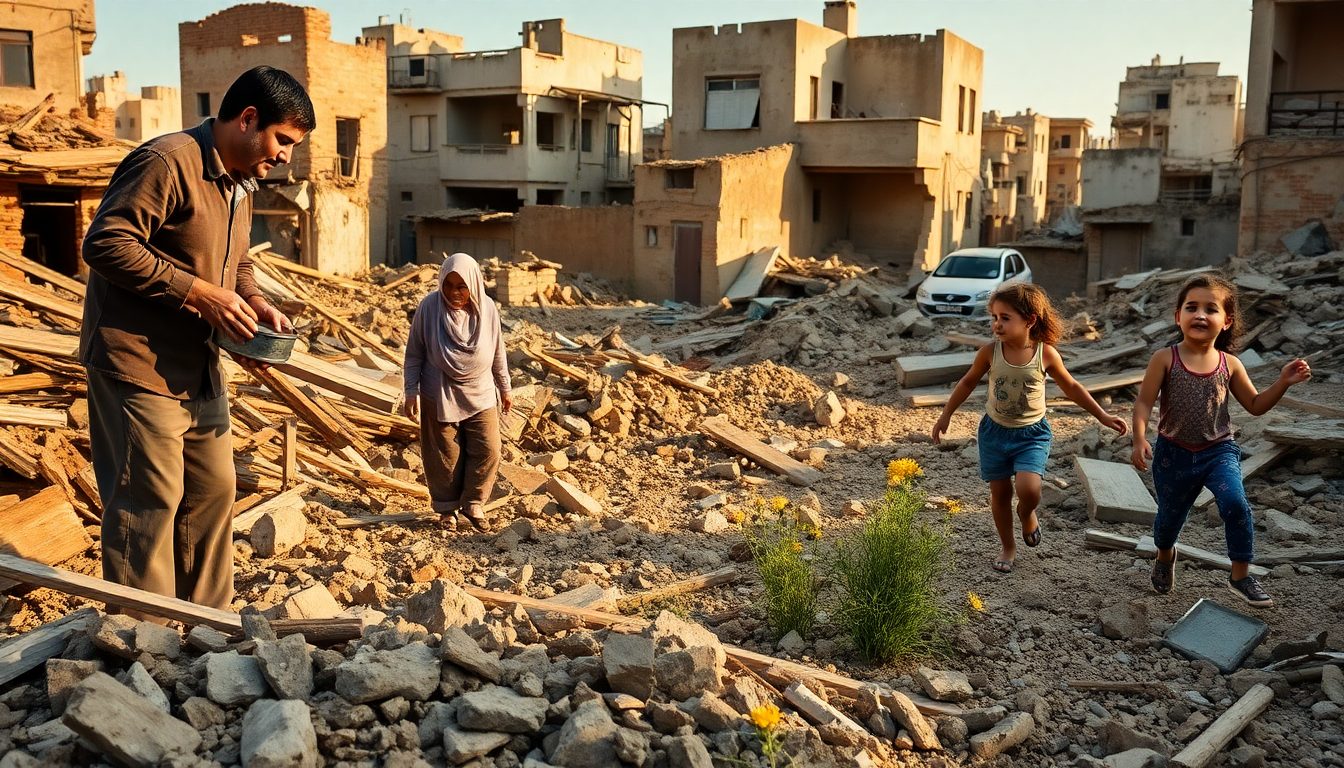Table of Contents
The ongoing conflict in Lebanon has left countless families grappling with profound challenges, especially those from the Shia community living in Dahiyeh. As they cope with the scars of war, these families are not just searching for shelter; they’re also striving to hold onto their sense of identity and community. What stories of resilience, loss, and hope emerge from the rubble of their former lives? This article takes a closer look at the experiences of families like Fatima Kandeel’s, shedding light on their struggles and their unyielding attachment to their homeland.
Understanding the Context of Displacement
In the heart of Beirut’s southern suburbs, the neighborhood of Dahiyeh stands resilient against the odds. This area, frequently targeted due to its ties with Hezbollah, has endured significant destruction over the years. The recent escalation of violence following hostilities in Gaza has only intensified the challenges for its residents. Families like Fatima Kandeel’s, who recently moved to a new apartment, embody the struggles many face. After losing their home to an Israeli airstrike, they sought refuge with relatives, a journey that mirrors a broader narrative of loss and survival.
Fatima’s modest living space is filled with symbolic items that narrate her family’s history and their ties to the community. A framed photograph of a deceased Hezbollah leader hangs alongside a portrait of her nephew, a young fighter who lost his life in the conflict. These artifacts serve as poignant reminders of the sacrifices made and the complex emotions that are intertwined with their identity. Isn’t it fascinating how such everyday items can carry so much weight in someone’s life?
The Emotional Toll of Conflict
As the war unfolded, the emotional landscape for families like Fatima’s grew increasingly fraught. Her sons, Hassan and Hussein, have faced significant psychological challenges, grappling with stress and anxiety amid the violence surrounding them. Hussein, in particular, has voiced a desire to leave Dahiyeh, highlighting the practical difficulties of living in a conflict zone and the fear of sectarian discrimination should they seek refuge elsewhere.
Yet, their determination to stay in Dahiyeh speaks volumes about their deep-rooted connections to the community. Fatima’s insistence on remaining in their neighborhood reflects a larger sentiment among many residents: a resolute refusal to abandon their home, even in the face of looming dangers. How does one maintain such strength in the face of adversity? The notion of resilience is palpable as they navigate their daily lives, finding comfort in the familiarity of their surroundings and the unwavering support of their neighbors.
Searching for a Safe Haven
However, the quest for safety is anything but straightforward. Family members like Iman, Fatima’s sister, envision a different path—one that leads them away from Dahiyeh in search of a more secure environment. Their harrowing experiences during the war, including facing hostility due to their identity, have fueled Iman’s desire to find a safer home for her children. The cycle of war and displacement weighs heavily on her, as she recalls fleeing multiple times during the recent conflict. Can you imagine the toll that takes on a family?
Despite these challenges, the family remains committed to Lebanon. Even as they explore potential relocation options, including Hazmieh—an area seen as safer—they face the harsh realities of sectarian biases and soaring rental prices. The struggle to find a space that respects their identity while offering a sense of security is an ongoing battle. What does it take to find a place to call home in such turbulent times?
Conclusion: The Unbreakable Bond to Home
As Fatima and her family navigate their uncertain future, their bond to their home in Dahiyeh remains unbroken. The stories of resilience and community that emerge from this neighborhood reflect a broader narrative of survival in the face of adversity. Despite the pain and loss, these families continue to nurture their connections to one another, reaffirming their commitment to stay rooted in a place that, despite its challenges, represents their identity and history. How do we define home when everything around us is in flux?


